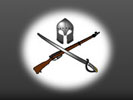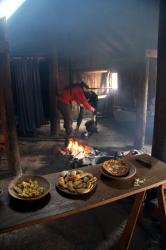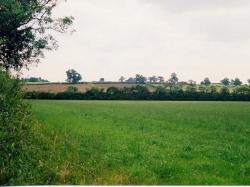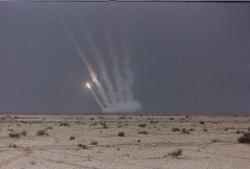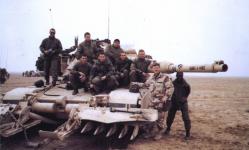Translate this Page
Majuba Hill
Battle Name : Majuba Hill
Date(s) : 27 February 1881
Part of : British Victorian Colonial 'Small Wars' , The 1st Boer War, or Transvaal War of Independence ,
Outcome : A victory for Boer (Transvaal) forces over British Colonial forces
Type of battle : Land
Summary
Boer citizen militia led by Generaal Piet Joubert stormed Majuba Hill and routed British force led by General Sir George Colley. Effectively the end of the 1st Boer War
Location
A few miles north of Newcastle in Natal, South Africa. (South Africa)
More details
This battle was the final stage of the Transvaal War of Independence. In 1877, Britain had annexed the Transvaal without a shot being fired, but in 1880 the Transvaalers rebelled and laid siege to British garrisons at Pretoria, Potchefstroom, Standerton, Lydenburg, Rustenburg, Marabastad and Wakkerstroom. They also sent a force to hold the crucial pass at Laing's Nek to prevent relief forces entering the Transvaal from Natal. Having failed to dislodge the Boer forces at Laing's Nek by frontal assault on 28 January, Sir George Colley decided to outflank them by taking Majuba hill to the right of the Boer line. This was successfully accomplished during the night by a mixed force consisting of elements of the 58th Regiment of Foot, the 60th Rifles, the 92nd Highlanders and the Naval Brigade, totalling 22 officers and 625 men. No artillery was taken.
Colley ordered his men to rest after the stiff climb, and no orders were given to build stone sconces. The top of hill proved to form a shallow crater, from which the Boer positions were out of view. At dawn, spontaneous shooting from British soldiers alerted the Boers to their presence. After some hesitation, Piet Joubert ordered a storming party of volunteers to drive the British from the hill. While about 150 older men laid down steady, long distance fire on the British positions, an equal number of younger men picked their way from cover to cover until they approached the summit. British casualties mounted. To shoot at the Boers, they had to expose themselves above the perimeter ridge, whereas the Boers below had ample cover. Eventually, it appears that the nerve of the outer picquets broke and they began to run back towards the centre of the position. Once the Boers had gained the perimeter, they were able to pour a hail of lead onto the exposed soldiers in the crater. The mixed British force lost all semblance of cohesion and then routed back the way they had come. General Colley himself was killed, one of the 96 British dead. A further 132 were wounded and 56 captured. Remarkably, the Boers had only 2 men killed and five wounded. Peace negotiations followed and the Transvalers regained their independence subject to certain conditions.
Peace negotiations followed, mediated by President Brand of the Orange Free State. The Boers attributed this remarkable victory to divine providence. For Britain, it was a lasting stain on the prowess of her military forces. In the subsequent Anglo-Boer War of 1899-1902, 'Remember Majuba!' was the battle cry on both sides. To fully appreciate the reasons for the British defeat, one must visit the site itself. The summit of the hill does not effectively command the Nek unless artillery is used, being out of effective rifle range. The slopes of the hill fall away in a series of ridges, providing much dead ground as cover. There is little loose stone on the summit, and the British could not have built sconces even had they received orders to do so. All in all, one cannot but conclude that Colley was most unwise to make this move and should have scouted the position better before commiting a force of this size.
[Entry provided by Chris Smith of the Heilbron Commando - see Links]
Casualty figures
British Colonial forces
- Number engaged :
- 645
- Casualties :
- 284 (44.03%)
Boer (Transvaal) forces
- Number engaged :
- 300
- Casualties :
- 7 (2.33%)
